
Following the example of the Asterix's Gallic village, a little bit of Anglo-Saxon-cultured land resists in Central America. The only country in this part of the world where English is the official language since Guatemala accepted to give up this land to the British crown. In return, the latter had promised to build a road between the Caribbean and Pacific coasts. The road was never built up and Belize got its independence a little bit more than 20 years ago. It's a sparsely populated country which is however packed with a striking cultural and ethnic diversity. Mayas and mestizos constitute the largest ethnic group to such an extent that, in the street, the Spanish speakers outnumber the English ones. Beside this group, more than 10% of the population is Mennonite; the Garifuna culture spreads over the coast and the islands of the country; and a great number of Chinese and Indians took over the shops. With hardly 300 000 inhabitants, Belize is an example of integration and tolerance.
However, a long time before the modern man draws arbitrary borders, the Mayan people lived in all over Belize and a lot of remains and old cities can be visited. Lamanai is one of them and has the special feature of being accessible by boat. A 2-hour trip on a greenery-flanked cloudy-watered river. Despite our noisy ride, several animals come and see us such as green iguanas, crocodiles, and spider-monkeys. The cruise finally turns out to be pretty short and we carry on with the visit of the archaeological site. A small park where the main buildings offer a gorgeous view over the canopy and the river. We finish our stroll at the end of the afternoon and sail back to the city of Orange Walk.




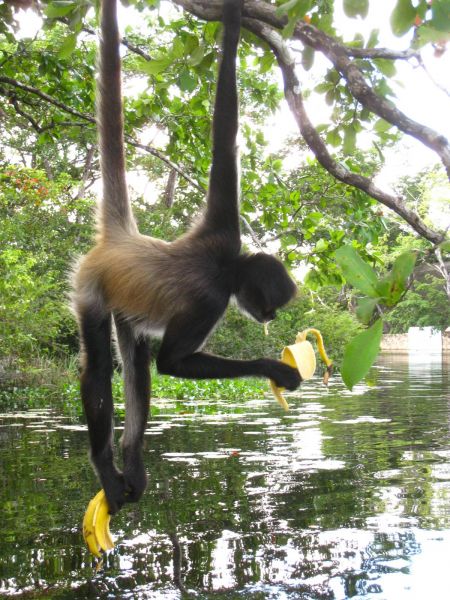















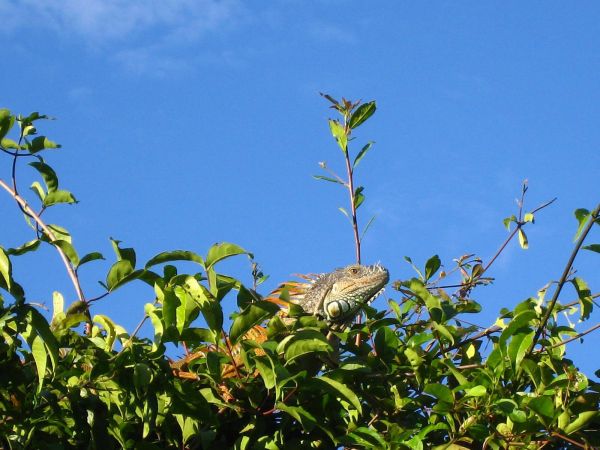
Keyword - boat trip -
Friday 28 November 2008
boat trip up to Lamanai
By dorian on Friday 28 November 2008, 20:55 - RTW2-Belize
Saturday 4 October 2008
smiles and happiness on a paradisiac island
By dorian on Saturday 4 October 2008, 08:47 - RTW2-Fiji

On the West coast of the Fiji main island, a series of bits of land popped out of the ocean surface. These sandy mounds group together in 2 archipelagos, the Mamanuca and the Yasawa. To get there, it's rather straightforward since everything gets organized from Nadi and most of the people take a package including the bus transfer up to the Denarau pier, the shuttle by boat then an all-inclusive option on one of the islands. But if we have a little bit more than a few days, we can hop from an island to another one and stay as long as we want.
When I get on the morning bus full of young westerners, a great dose of a priori overwhelms me as for the kind of tourism on those islands. The harbour check-in area reinforces my suspicions and I'm very far from the serenity of Taveuni. I don't really feel comfortable among this flock of tourists. We board the « Awesome Adventures » catamaran and leave the bank. The sight of the first island clears away my bad thoughts on the mass tourism because this outcrop of wild life symbolizes the happiness for thousands of holidaymakers. This idyllic image often related but seldom precisely located. As if the one who knew its site doesn't wish « his » shangri-la be visited by other people. To talk again about this first island called South Sea Island, a hardly-50-meter-wide disc encircled by a broad white-sand beach and in its center, a few bungalows nestled in banana- and coconut trees. The ideal site to perform the XXI-century's Robinson Crusoe. In this connection, it's on one those islands the « Castaway » movie was shot. We pass by some other islands of the Mamanuca group such as Bounty, Treasure and Beachcomber islands and head for the Yasawa archipelago to finally arrive on « my » island, Kuata.



A wooden boat comes to pick up the tourists (only 3) who set their heart on this bit of land. A nice committee starts the invigorating welcome song and we land on the beach. Flowery shirts, large smiles, relaxed rhythm and brief introductions, we already feel well.
The gathering of bungalows belongs to village located on the opposite island. A fair-tourism since all the spent money goes to the community. And this island has a human dimension that cheers the heart up. Because in addition to the superb beach, the breathtaking view from the top of the rock and the lavish submarine scenery what we keep in mind of such an experience is the encounters that sum up with this sentence: At Kuata, you arrive as an unknown person and you leave as friend. Perpetual, infectious smile and exhilaration, and despite all the tourists who get to these islands every year, the inhabitants kept real ties in their traditions with the kava ceremony which happens every night at the bottom of wooden hut. Special slice of life where we chat, joke and play music and each one, whatever his origin and colour is free to take part in.
After sharing a lot during my sojourn here and having the feeling to know each member of the community, it's with the heavy heart I move away from the shore to go back to Nadi. Because in addition to the emotion of the departure, this last crossing sounds the end of my Fijian escapade and the unpleasant feeling of not staying enough time.


Saturday 20 September 2008
In the Sydney harbour
By dorian on Saturday 20 September 2008, 12:50 - RTW2-Australia

Bye Bye welcoming and intoxicating Asia, I set foot in Australia for a short 2-night stop in the city of Sydney. I put down my bag at the youth hostel and go for a stroll to Darling Harbour which brings together restaurants, bars et tourist attractions such as the Sydney aquarium or the maritime museum. But my look and my steps flee northwards. I'm in a hurry to walk alongside the bank to contemplate two Sydney-symbolizing monuments. On my left, I look up and the metallic frame of the Harbour Brigde overlooks me with all its loftiness. I turn the head on the right and the blowing-up-by-the-wind sail- or shell-shaped domes of the Opera House marvelously marks the end of the bank. I sit down on the steps of the music-dedicated building and chill out, observing the boats that move up and down and distribute their flood of passengers all over the town.
I take my ticket for the other shore. From this side, the view is different. The Opera House harmoniously finishes the disjointed skyline drawn by the skyscrapers of the city. In this hushed-atmosphere district, in the north of Sydney, large residences stretch over. A taste of tranquility, five minutes from the heart of the city. As incredible as it can be, I step on a desert beach in the middle of Sydney. I worm my way in the alleyways of the detached houses towards the Harbour Bridge. The dusk is brewing, the first artificial lights switch on up to cover the town with a sparkling halo. The panorama is still more attractive, the geometric lines fade away into the night to only stand out these luminous impressions. That's lovely a city by night.
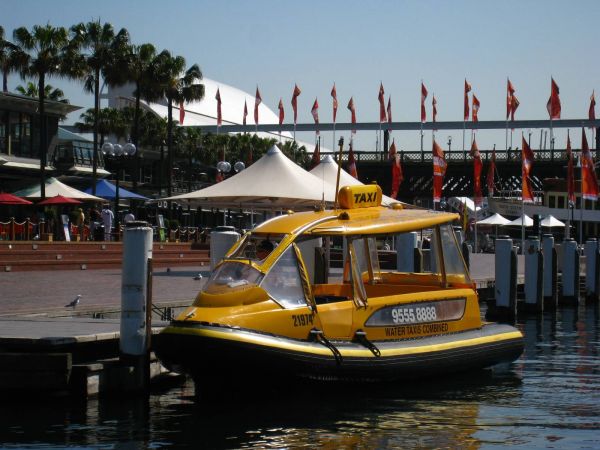
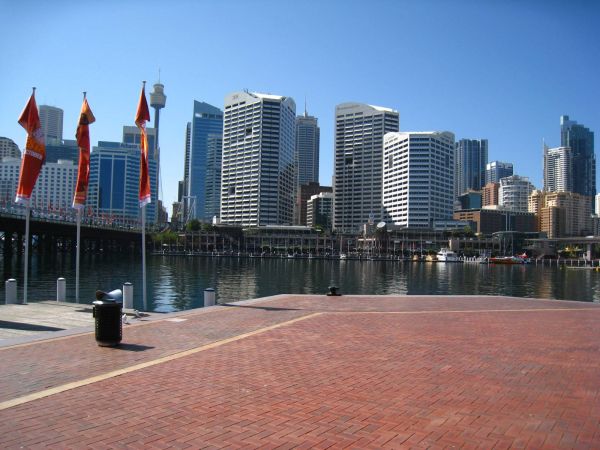
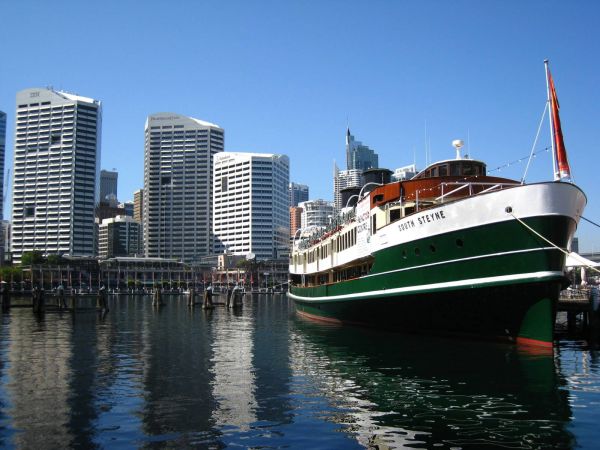
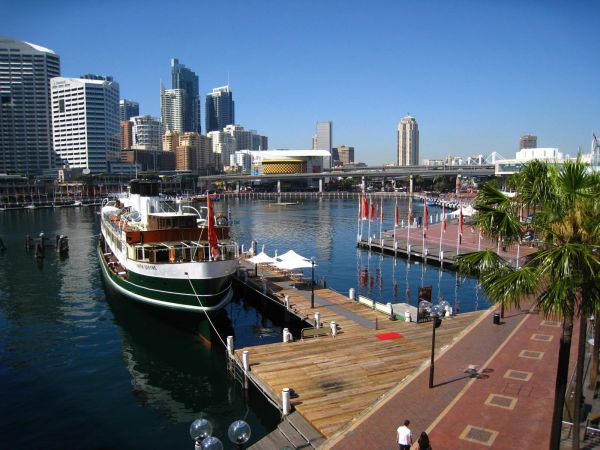
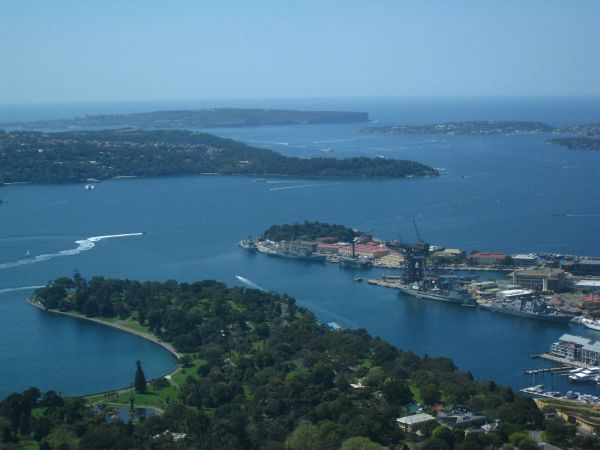
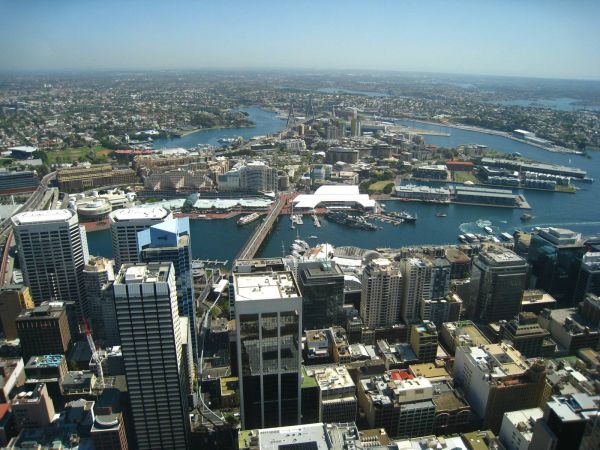
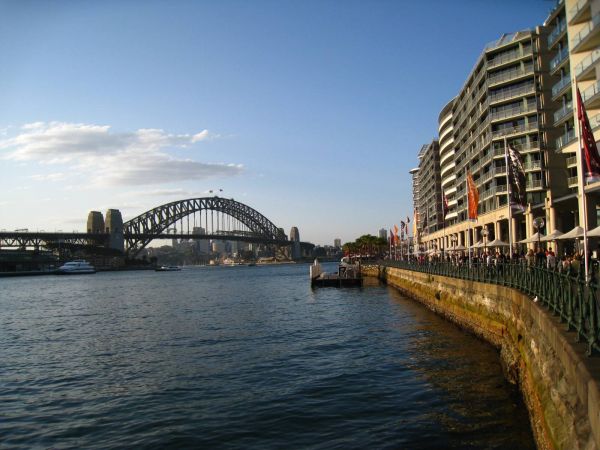
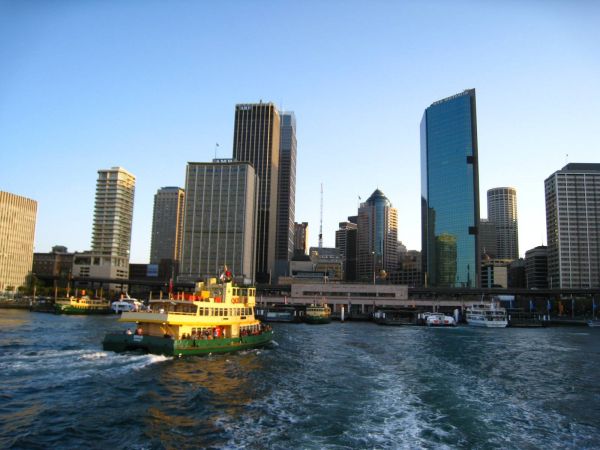
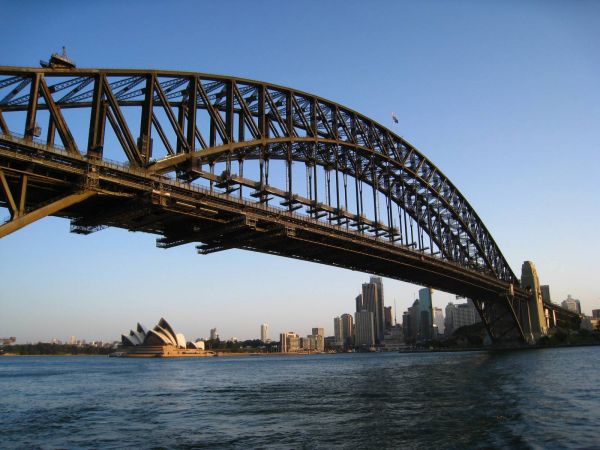
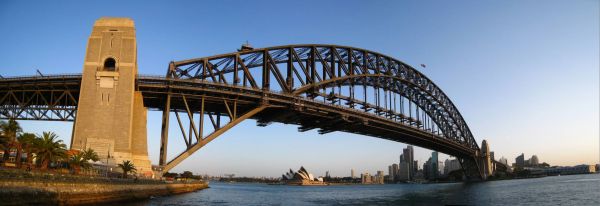
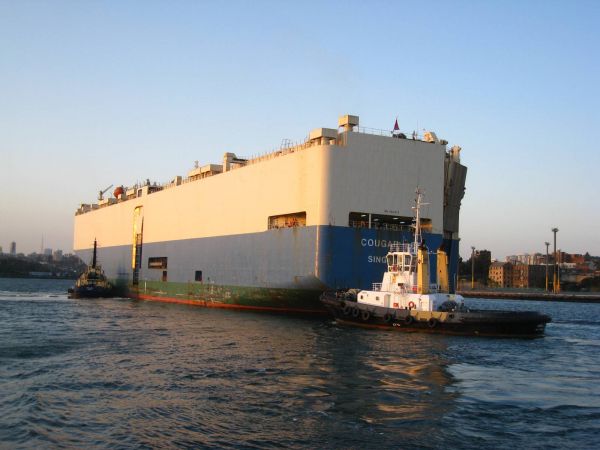
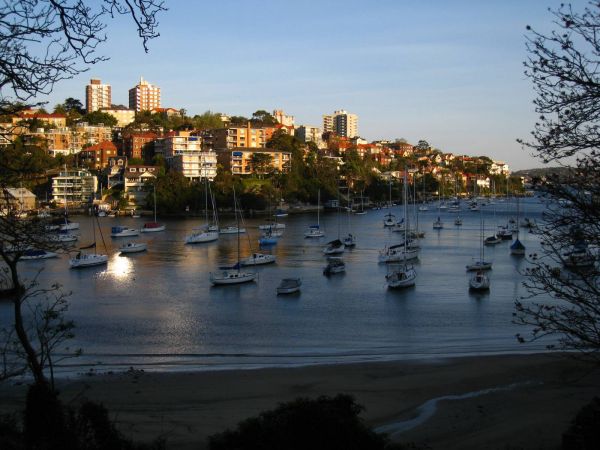
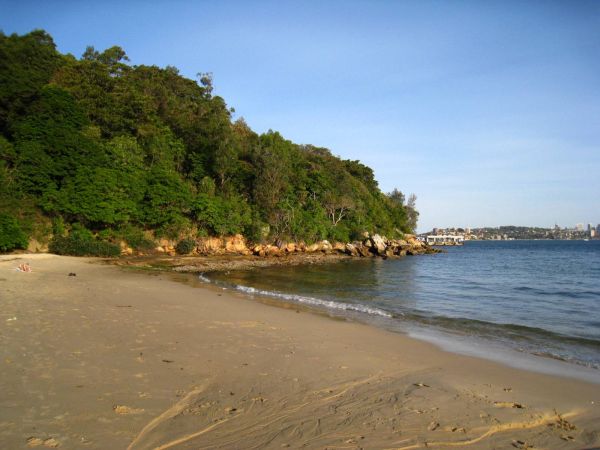
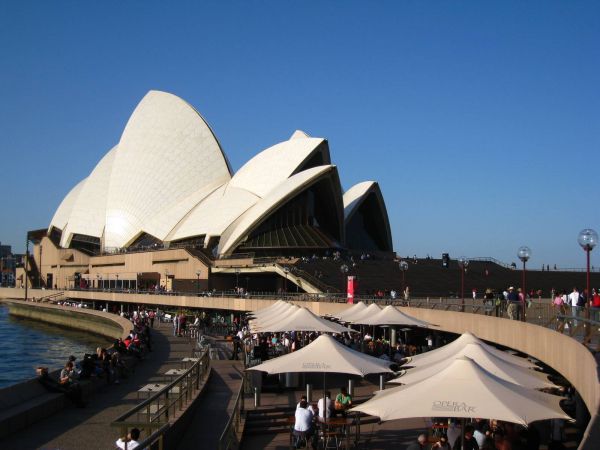
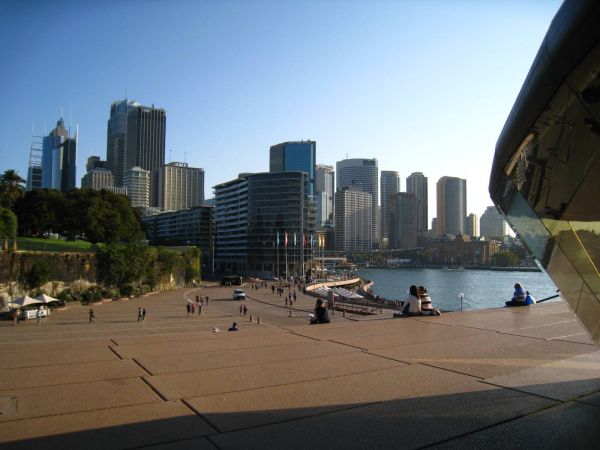
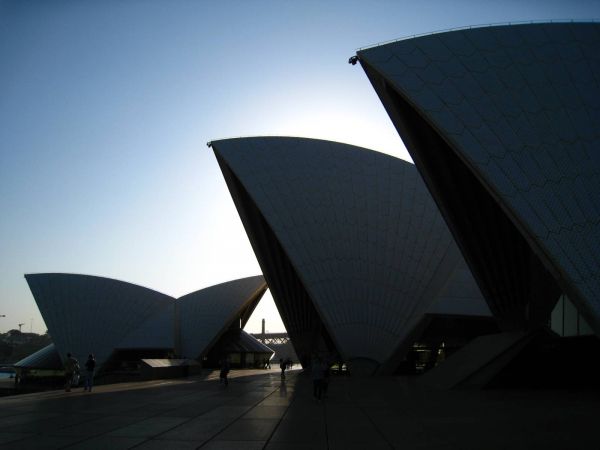
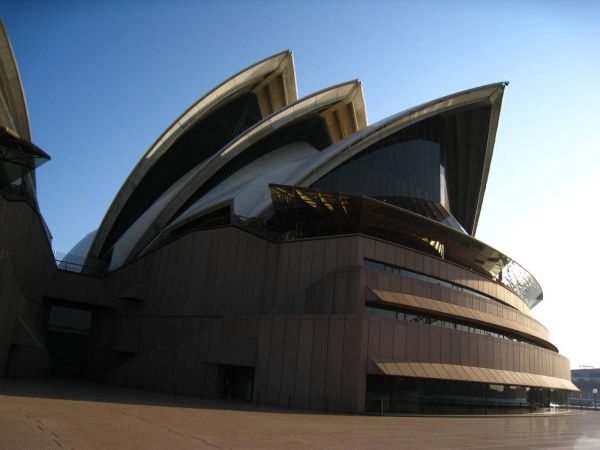
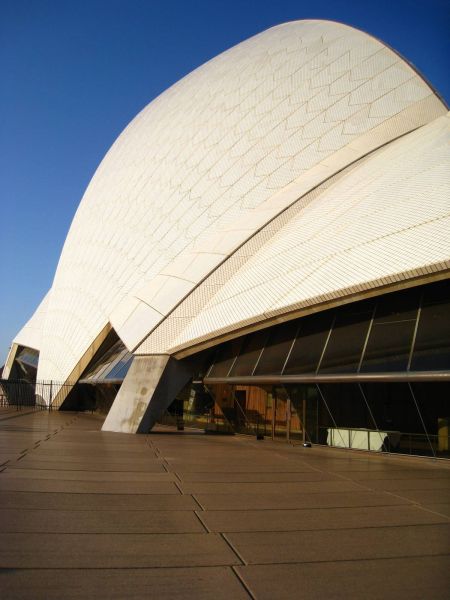

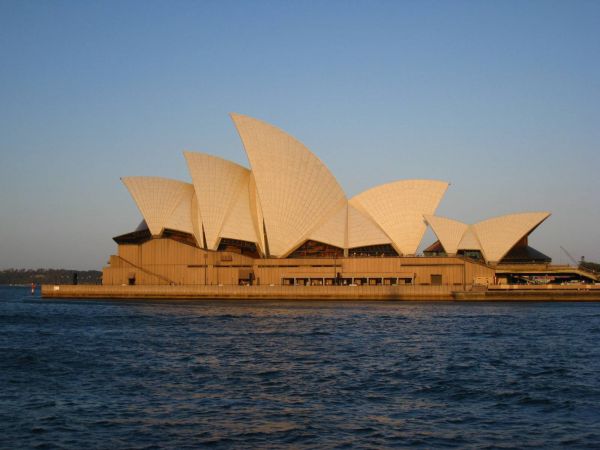
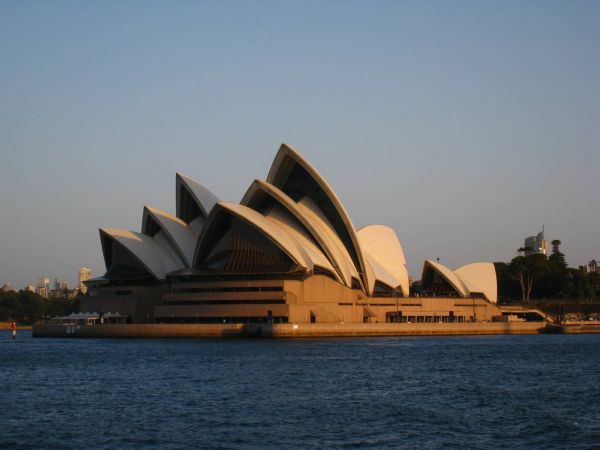
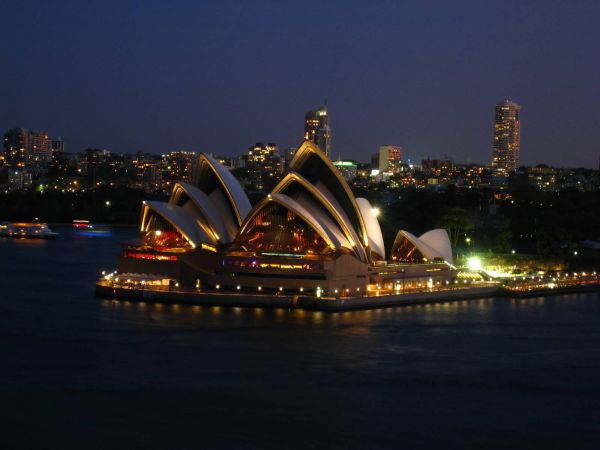
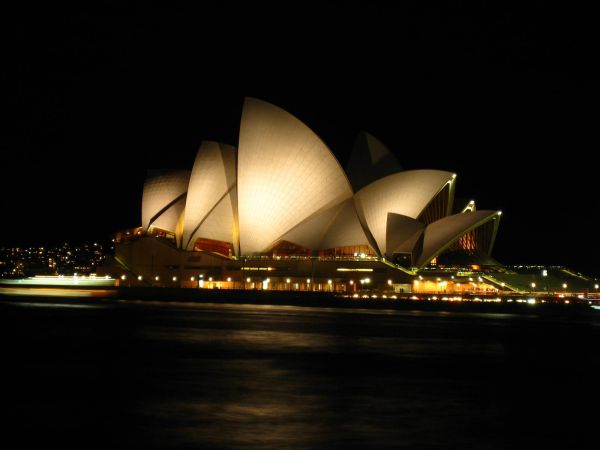

I couldn't leave Sydney without seeing some specimens of the weird and endemic animals which populate the Australian ground and waters. I get to the vivarium where a number of animals are unfortunately shut in. Even if it remains the easiest way to familiarize oneself with those living beings. Koala, platypus, kangaroo, wombat, collared iguana, everything is there. Without forgetting that Australia shelters the most dangerous spider and snake in the world.

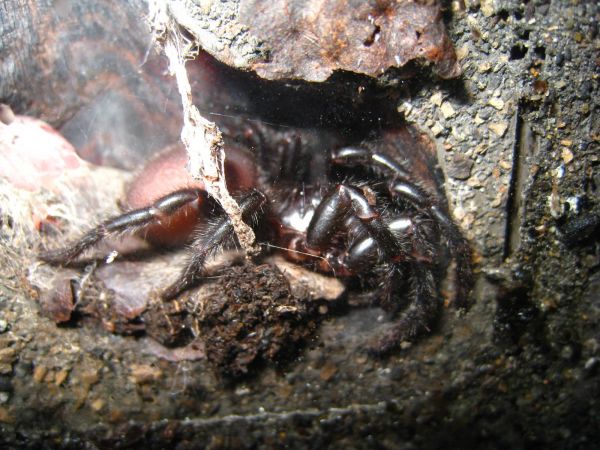
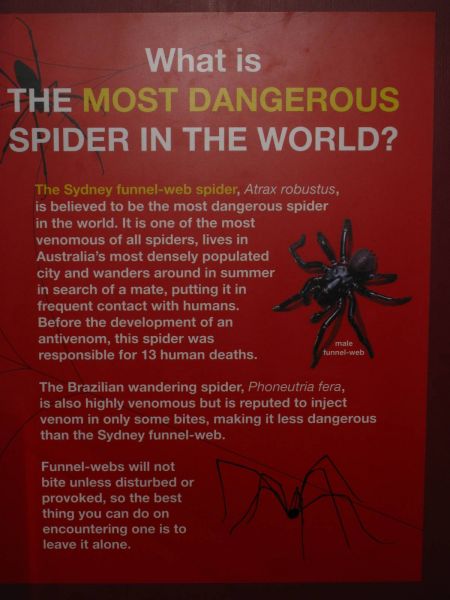


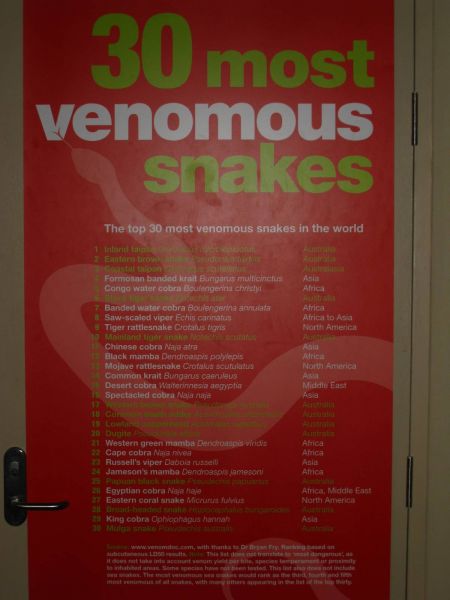
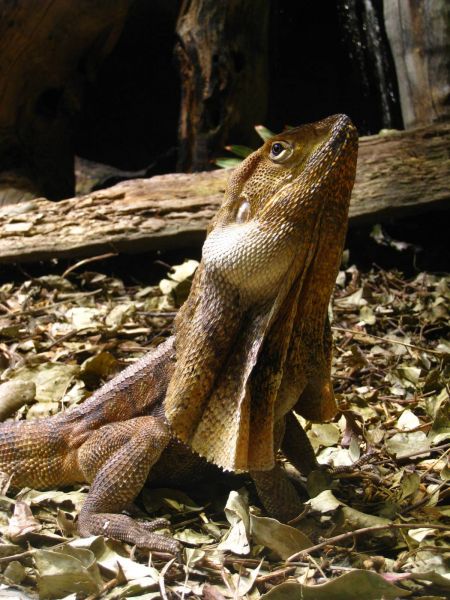



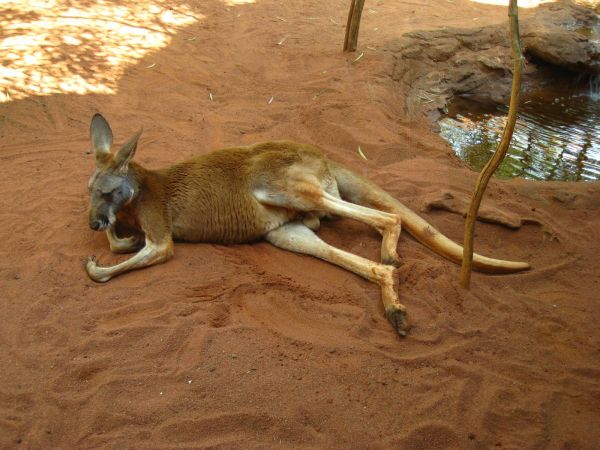

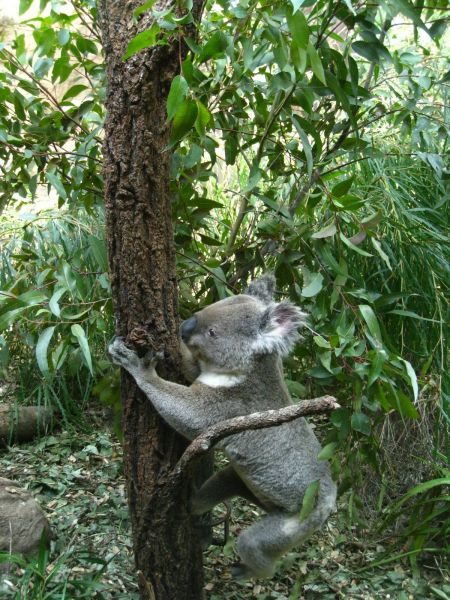
« previous entries - page 2 of 7 - next entries »























 visits
visits